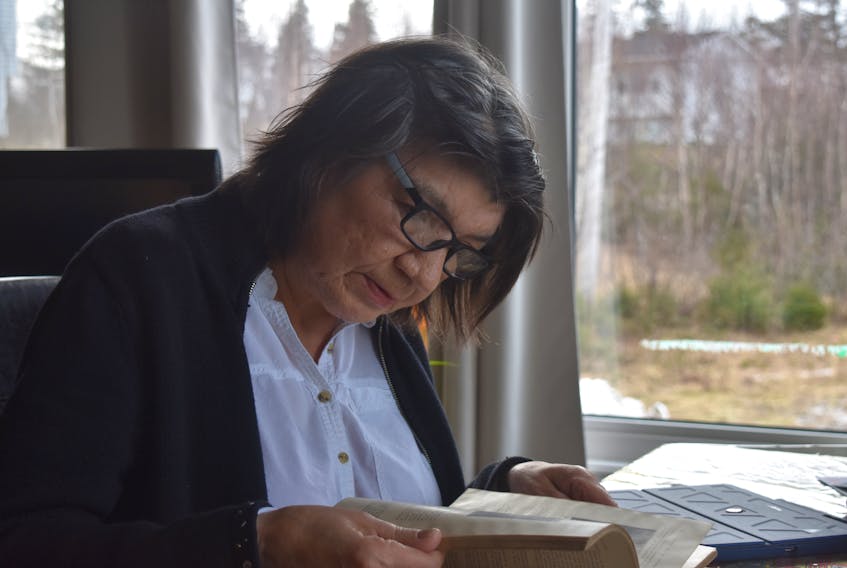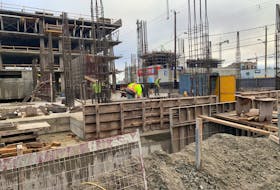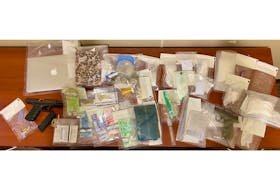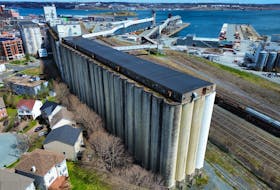PICTOU LANDING, N.S. — Mary Nicholas’ early memories of Boat Harbour involve a smelt run and a plastic bag.
“I remember someone showing me to punch a bunch of holes in the bag, but not big enough for the smelt to get through,” says Nicholas.
Strictly speaking, she wasn’t allowed to go to the tidal estuary next to her community. She was still young and her parents wanted her to stay where they could see her, “but I snuck off with some young kids and they said that there was a smelt run,” she says. “That’s when the streams are just full of smelt. There were so many.”
So, what they did was to take the freshly perforated plastic bread bag and hold it open in the knee-deep water, “and my bag was full. It was full in three minutes. I thought, ‘gosh it took me longer to get dressed.'”
Then they took their catch home for dinner.
For a ten-year-old Nicholas, there was no such thing as Boat Harbour.
“It wasn’t even called Boat Harbour when I was young,” says Nicholas, 68.
“I always knew it as A’se’k.”
Or, "the other room."
“Like your storage room, or your root cellar or something. But it was the whole lake,” says Nicholas. “Everything was there; salmon, smelts, eels, clams. Everything.”
Everything changed in 1966 when the Nova Scotia government under Robert Stanfield authorized the Nova Scotia Water Authority to provide Boat Harbour for the disposal of effluent from the newly minted Scott Maritimes Pulp Ltd. pulp mill at Abercrombie Point.
“I wasn’t even a teenager yet,” says Nicholas. “Everything I knew just didn’t exist anymore. The way we ate. The way we lived, the way we harvested food. Gone.”
The fate of Boat Harbour has been tied to the future of the mill ever since. In 1991 and 1992 the provincial government promised Pictou Landing First Nation that the effluent treatment facility would be closed on Dec. 31, 1995.
Up until 1995, the province had been fronting the cost to own, operate and maintain the site. Once that responsibility was transferred over to the mill, the provincial government (now under the leadership of John Savage) allowed Scott Maritimes to keep Boat Harbour going for ten more years by leasing it to them.
Since then, ownership of the mill has traded hands and the effluent treatment site at Pictou Landing has stayed open.
Like her grandfather Noel, Nicholas' father, John Noel Nicholas was a year-round harvester in Pictou Landing. Nicholas' mother, Julia kept a garden like so many who lived in the community, and The Other Room was a vital for the Pictou Landing economy and way of life.
Nicholas left her home when she was 17. She lived in Calgary and then on Vancouver Island. She didn’t come back to the East Coast until 1994. She became her nephew’s guardian and took him back with her to the West Coast.
“One day I looked at him and said, ‘oh my goodness this boy is an East Coast boy. Not a West Coast boy.’ So, I brought him back home. That was in 1995.”
She’s been back in Pictou Landing ever since.
Promises
“Ever since Boat Harbour started it began with a promise,” says Nicholas. “And every time something happens there, you’re always promised that something better is going to happen next, that there will be some resolution or remediation they call it today.”
There’s an invitation from the Pictou Landing First Nation band council on the table inside Mary Nicholas’ living room. It’s telling everyone in the community about an event happening on Jan. 31, 2019 , celebrating the start of a 365-day countdown to the day when Boat Harbour is legislated to close and the be turned over to the remediation process designed to turn Boat Harbour back into A’se’k.
“For me, it’s hard to get excited anymore,” she says. “I’ve been brought here too often. To that point where something is going to get done. I’m at a point where I’ll just wait and see.”
RELATED
- Stellarton Council passes motion to send letter showing support for Boat Harbour extension
- ‘Nothing lives in Boat Harbour’: Pictou Landing First Nation Chief Andrea Paul seeks allies on Pictou County council
- Public will have chance to give input on whether Northern Pulp project should undergo federal assessment says Sean Fraser









